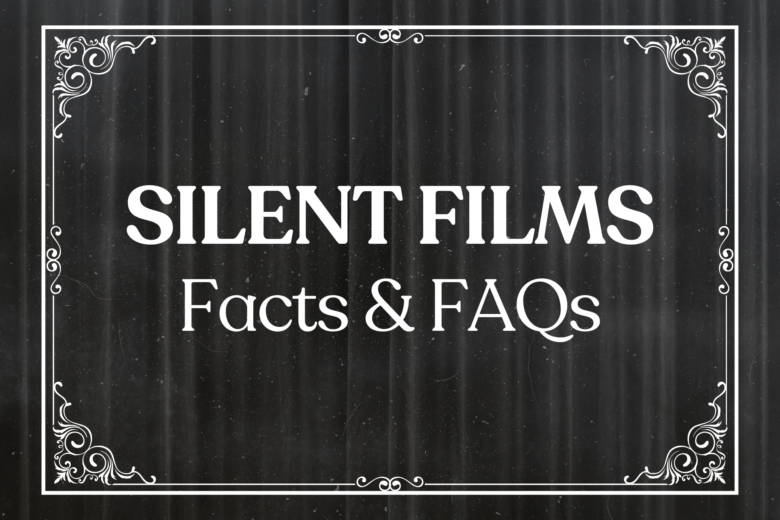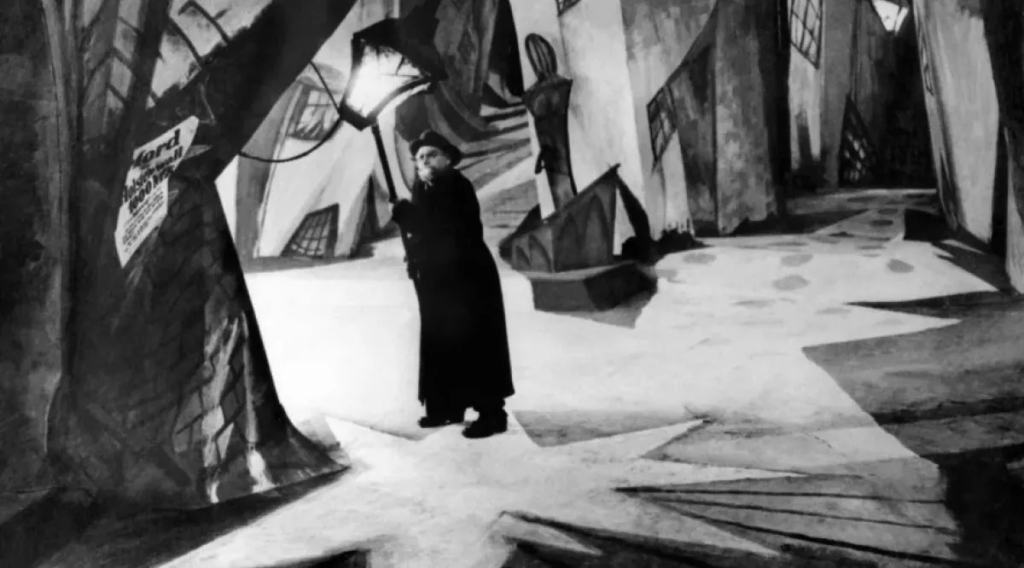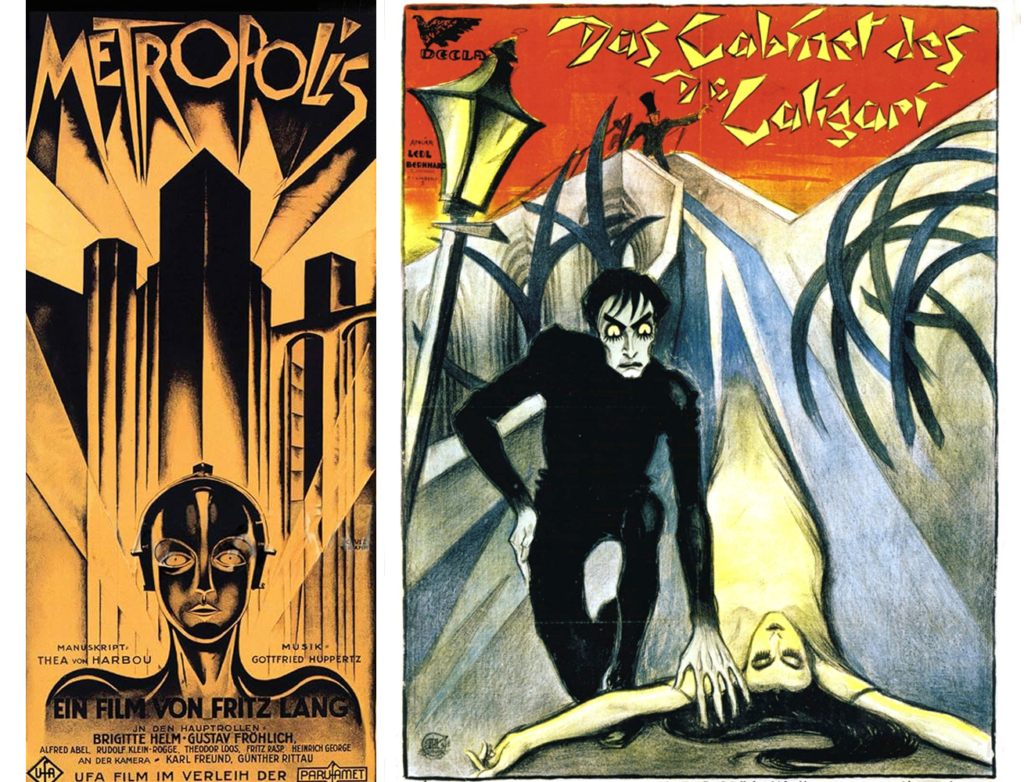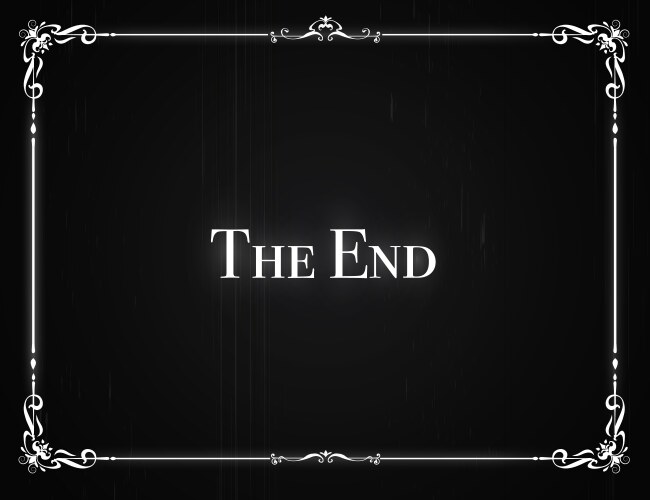Silent films were the foundation of modern cinema, and are so much more than just “movies without sound.”
These movies used powerful and creative storytelling techniques to captivate audiences. Here, we explore what silent films are, how they began, why they ended, and how the silent film era is still celebrated today.
WHAT IS A SILENT FILM?
A silent film was a type of movie made without synchronized recorded sound. No dialogue, no sound effects, no soundtrack. Instead, these films relied entirely on visuals to tell the story. Actors gave expressive, mime-like performances, and editors added subtitles and intertitles to guide the audience through the plot.
Silent films were the norm from the late 1800s to the late 1920s, before “talkies” (films with sound) took over. But just because they’re called “silent” doesn’t mean the experience was completely quiet. Did silent films have music? Absolutely!
While the films themselves didn’t have recorded soundtracks, they were almost always accompanied by live music in the theater. A pianist, or even a full orchestra, would perform alongside the screening to highlight dramatic moments and keep audiences engaged.
WHY WERE FILMS SILENT?
Now we know what a silent film is, let’s look at the ‘why’.
Why were films silent? It’s simple: because the technology to record and sync sound with moving images didn’t yet exist. When motion pictures first took off in the late 1800s and early 1900s, filmmakers had cameras and projectors, but no way to capture audio that could play in sync with the film.
However, there were some benefits: silent films worked incredibly well across different countries. Without spoken dialogue, there were no language barriers to worry about. Studios could easily swap out the intertitles (written dialogue and story cards) to match the local language. This helped early cinema spread quickly around the world.
WHAT WAS THE FIRST SILENT FILM?
So, when did silent films start? The very first silent film ever made was Roundhay Garden Scene, filmed in 1888 by Louis Le Prince. It shows four people walking in a garden. It’s only about two seconds long, but it holds the title as the earliest surviving motion picture.
The first commercial silent film came a few years later in 1895: the Lumière brothers’ Workers Leaving the Lumière Factory. It was the first film to be shown to a paying audience, and depicted scenes of everyday French life.
Then came the first feature-length silent film, The Story of the Kelly Gang (1906), made in Australia. It ran for over an hour and told the dramatic tale of the infamous bushranger Ned Kelly. This was a huge leap forward for the movie industry, proving that films could be more than short novelties.
These titles laid the groundwork for a golden era of silent cinema, which included some iconic films like:
- The Cabinet of Dr. Caligari (1920), a twisted horror film with bizarre imagery
- The Kid (1921), a comedy-drama directed by and starring Charlie Chaplin
- Sherlock Jr. (1924), a clever action comedy with impressive stuntwork
- Metropolis (1927), a visually stunning sci-fi epic set in a futuristic city
- Sunrise: A Song of Two Humans (1927), which won the Academy Award for Best Picture
These films showed just how much silent cinema could do, even without a single spoken word.
WHEN DID SILENT FILMS END?
Silent films began to fade out in the late 1920s, as new sound technology made it possible to record and sync audio with what was on screen. These new movies became known as “talkies.”
The true birth of talkies began in 1927 with the release of The Jazz Singer, the first feature-length film with synchronized spoken dialogue. In theatres, audiences were blown away: hearing actors actually speak on screen felt like magic.
Studios rushed to upgrade their equipment, theaters installed sound systems, and within just a few years, silent films were all but gone from mainstream cinema. By the early 1930s, talkies were the new standard, and a whole new chapter of cinema had begun.
SILENT FILM’S LINGERING INFLUENCE
If you want an official answer for “when did the silent film era end,” it’s difficult to define. Even once they were phased out of the mainstream, the format’s influence lingered. Classic silent films by legends like Charlie Chaplin and Buster Keaton are still celebrated for their storytelling, creativity, and emotional power.
Chaplin’s later works, like City Lights in 1931 and Modern Times in 1936, proved that even as sound took over, silent-style filmmaking wasn’t going anywhere. The latter was one of the first 25 films selected by the Library of Congress for preservation in the National Film Registry for being “culturally, historically, or aesthetically significant.”
In fact, the silent format continues to inspire modern filmmakers.
SILENT FILM IN THE 21st CENTURY
One of the most striking examples is The Artist, released in 2011, which was both a critical and box office hit. This French black-and-white silent film was a love letter to Hollywood’s silent era, following a fading silent movie star as sound films take over.
The movie had no sound except a sweeping musical score, using only acting and intertitles to tell the story. The Artist won five Academy Awards, including Best Picture, Best Director, and Best Actor, proving that the silent format still has its place in modern cinema.
Other 21st-century films that draw on silent film traditions include:
- The Triplets of Belleville (2003), an animated French comedy that follows an elderly woman trying to rescue her kidnapped grandson
- Blancanieves (2012), a Spanish reimagining of Snow White set in 1920s Spain, entirely silent and shot in black-and-white
- All is Lost (2013), a powerful drama featuring Robert Redford as a man lost at sea
- Mad God (2021), a stop-motion animated experimental horror film that took over 20 years to produce, and often tops lists of the best silent films of all time
Silent films aren’t just a relic of old Hollywood. The spirit of silent cinema lives on as a powerful medium for storytelling that modern filmmakers continue to explore, and audiences continue to love.




